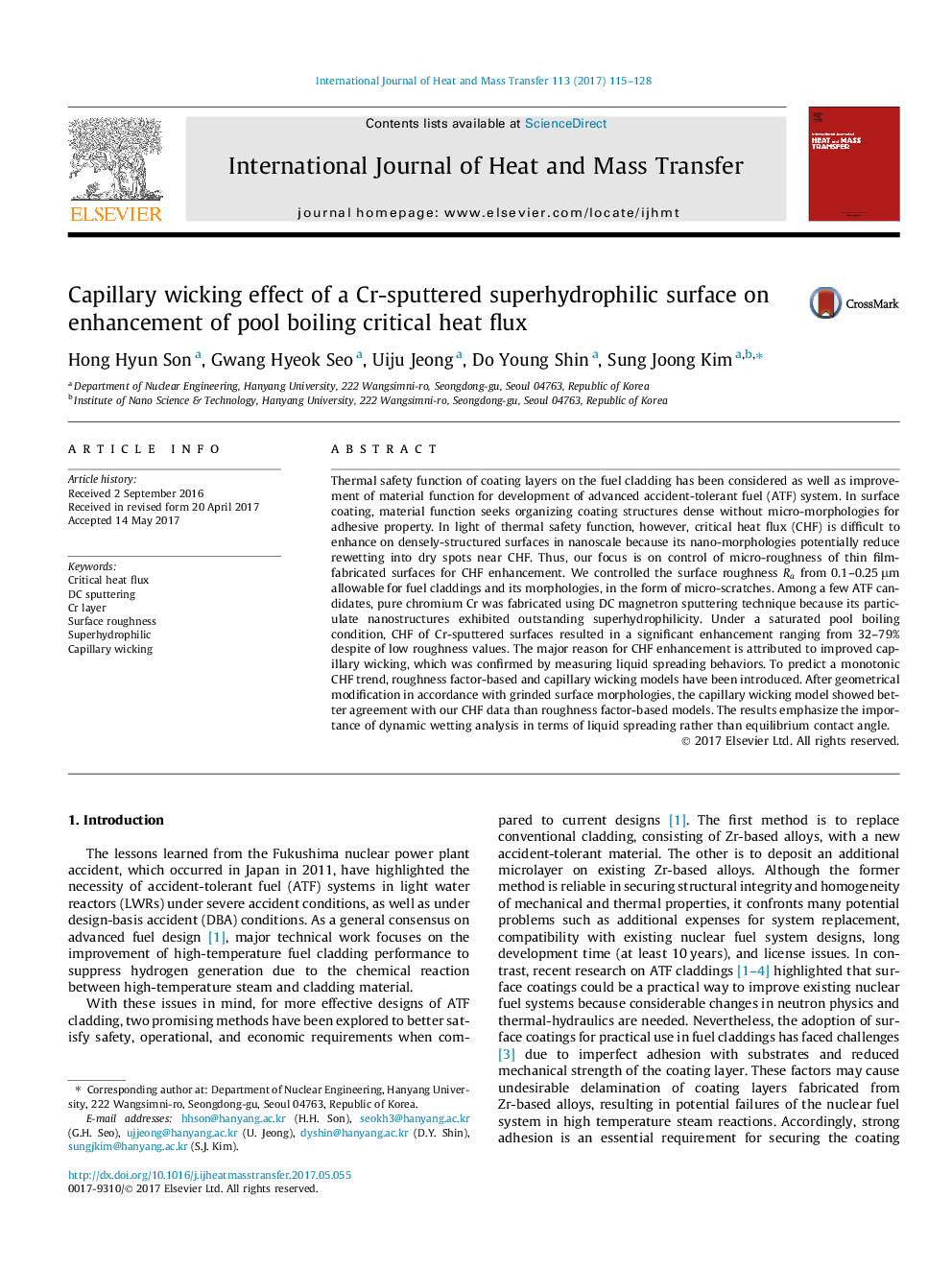| کد مقاله | کد نشریه | سال انتشار | مقاله انگلیسی | نسخه تمام متن |
|---|---|---|---|---|
| 4994160 | 1458028 | 2017 | 14 صفحه PDF | دانلود رایگان |
عنوان انگلیسی مقاله ISI
Capillary wicking effect of a Cr-sputtered superhydrophilic surface on enhancement of pool boiling critical heat flux
دانلود مقاله + سفارش ترجمه
دانلود مقاله ISI انگلیسی
رایگان برای ایرانیان
کلمات کلیدی
موضوعات مرتبط
مهندسی و علوم پایه
مهندسی شیمی
جریان سیال و فرایندهای انتقال
پیش نمایش صفحه اول مقاله

چکیده انگلیسی
Thermal safety function of coating layers on the fuel cladding has been considered as well as improvement of material function for development of advanced accident-tolerant fuel (ATF) system. In surface coating, material function seeks organizing coating structures dense without micro-morphologies for adhesive property. In light of thermal safety function, however, critical heat flux (CHF) is difficult to enhance on densely-structured surfaces in nanoscale because its nano-morphologies potentially reduce rewetting into dry spots near CHF. Thus, our focus is on control of micro-roughness of thin film-fabricated surfaces for CHF enhancement. We controlled the surface roughness Ra from 0.1-0.25 μm allowable for fuel claddings and its morphologies, in the form of micro-scratches. Among a few ATF candidates, pure chromium Cr was fabricated using DC magnetron sputtering technique because its particulate nanostructures exhibited outstanding superhydrophilicity. Under a saturated pool boiling condition, CHF of Cr-sputtered surfaces resulted in a significant enhancement ranging from 32-79% despite of low roughness values. The major reason for CHF enhancement is attributed to improved capillary wicking, which was confirmed by measuring liquid spreading behaviors. To predict a monotonic CHF trend, roughness factor-based and capillary wicking models have been introduced. After geometrical modification in accordance with grinded surface morphologies, the capillary wicking model showed better agreement with our CHF data than roughness factor-based models. The results emphasize the importance of dynamic wetting analysis in terms of liquid spreading rather than equilibrium contact angle.
ناشر
Database: Elsevier - ScienceDirect (ساینس دایرکت)
Journal: International Journal of Heat and Mass Transfer - Volume 113, October 2017, Pages 115-128
Journal: International Journal of Heat and Mass Transfer - Volume 113, October 2017, Pages 115-128
نویسندگان
Hong Hyun Son, Gwang Hyeok Seo, Uiju Jeong, Do Young Shin, Sung Joong Kim,